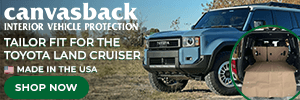I managed to pick up fine tar spatter on the bottom half of my paintwork, what a nightmare!
Not wanting to use strong soap or automotive shampoo to remove this, it seemed to just not come off.
Enter into my life Detailing clay! This is synthetic polymer clay used by professional detailers, pricey at £14 a puck but so worth it.
After a good and thorough wash, I pulled up my rolling chair, filled a spray bottle with auto shampoo and water and started. It is a careful process, but the clay will pick up any roughness and pull it into the clay, not scratching or marking your paint.
I am adding a couple of pictures of the clay after the exercise as well as the end result with added ceramic coating.
A great outcome.




Not wanting to use strong soap or automotive shampoo to remove this, it seemed to just not come off.
Enter into my life Detailing clay! This is synthetic polymer clay used by professional detailers, pricey at £14 a puck but so worth it.
After a good and thorough wash, I pulled up my rolling chair, filled a spray bottle with auto shampoo and water and started. It is a careful process, but the clay will pick up any roughness and pull it into the clay, not scratching or marking your paint.
I am adding a couple of pictures of the clay after the exercise as well as the end result with added ceramic coating.
A great outcome.



